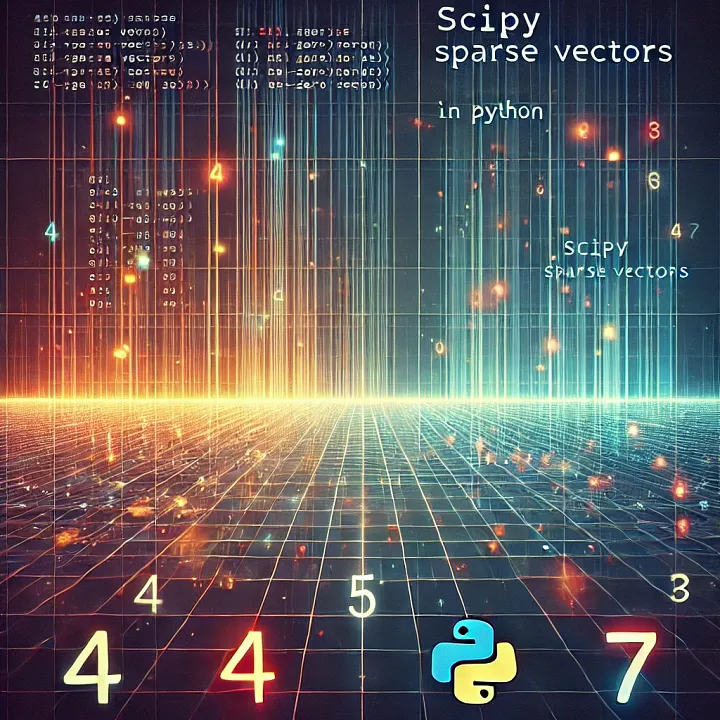How to Create Sparse Vectors in Python Using scipy.sparse
admin
# NLP sparse vectors #Python sparse matrices #recommender systems sparse data #graph adjacency matrix Python
How to Create Sparse Vectors in Python Using scipy.sparse
If you're working with large datasets, sparse vectors are a must-know concept. They allow you to store and process data efficiently when most of the elements are zeros. In this article, we'll explore how to create a sparse vector in Python using the scipy.sparse library, why they are useful, and their real-world applications.
What Are Sparse Vectors?
Sparse vectors are data structures designed to store only non-zero elements and their positions, saving memory and computational resources. This is particularly helpful in fields like machine learning and data science, where datasets can have millions of dimensions but only a fraction of non-zero values.
Creating Sparse Vectors with Python
Python’s scipy.sparse module provides various formats for sparse matrices, with the Compressed Sparse Row (CSR) format being one of the most commonly used. The CSR format is efficient for arithmetic operations and slicing.
Here’s how you can create a sparse vector in CSR format:
import scipy.sparse as sp
# Define the non-zero elements and their positions
data = [4, 5, 7]
indices = [0, 3, 5]
indptr = [0, 3] # Indicates the start of the row in data
n = 6 # Length of the vector
# Create the sparse vector
sparse_vector = sp.csr_matrix((data, indices, indptr), shape=(1, n))
print(sparse_vector)
Output:
(0, 0) 4
(0, 3) 5
(0, 5) 7
This shows that the sparse vector has non-zero elements 4, 5, and 7 at positions 0, 3, and 5, respectively.
Advantages of Sparse Vectors
- Memory Efficiency: By storing only non-zero elements, sparse vectors drastically reduce memory usage, which is crucial for handling large-scale datasets.
- Computational Speed: Operations on sparse vectors are faster since they focus only on the non-zero elements.
Real-World Applications of Sparse Vectors
-
Natural Language Processing (NLP): Sparse vectors are widely used in text processing tasks. For example, the Term Frequency-Inverse Document Frequency (TF-IDF) and Bag-of-Words models produce sparse representations of text, where most dimensions correspond to words that do not appear in the document.
-
Recommender Systems: User-item interaction matrices in recommendation systems are often sparse since most users interact with only a small subset of items.
-
Graph Representations: In graph-based applications, adjacency matrices are usually sparse because each node connects to only a limited number of other nodes.
Integrating Sparse Vectors in Machine Learning
Libraries like scipy and scikit-learn make it easy to integrate sparse vectors into machine learning pipelines. For example, CountVectorizer and TfidfVectorizer in scikit-learn generate sparse matrices directly from text data, making them suitable for high-dimensional models.
Conclusion
Sparse vectors are a powerful tool for working with high-dimensional, sparse datasets in Python. The scipy.sparse module provides an efficient way to create and manipulate these data structures, enabling faster computation and lower memory usage. Whether you’re working on NLP, graph analysis, or recommendation systems, understanding sparse vectors is essential for optimizing your workflows.
If you're looking to level up your data processing skills, start using sparse vectors today and see the difference they make in your projects!
